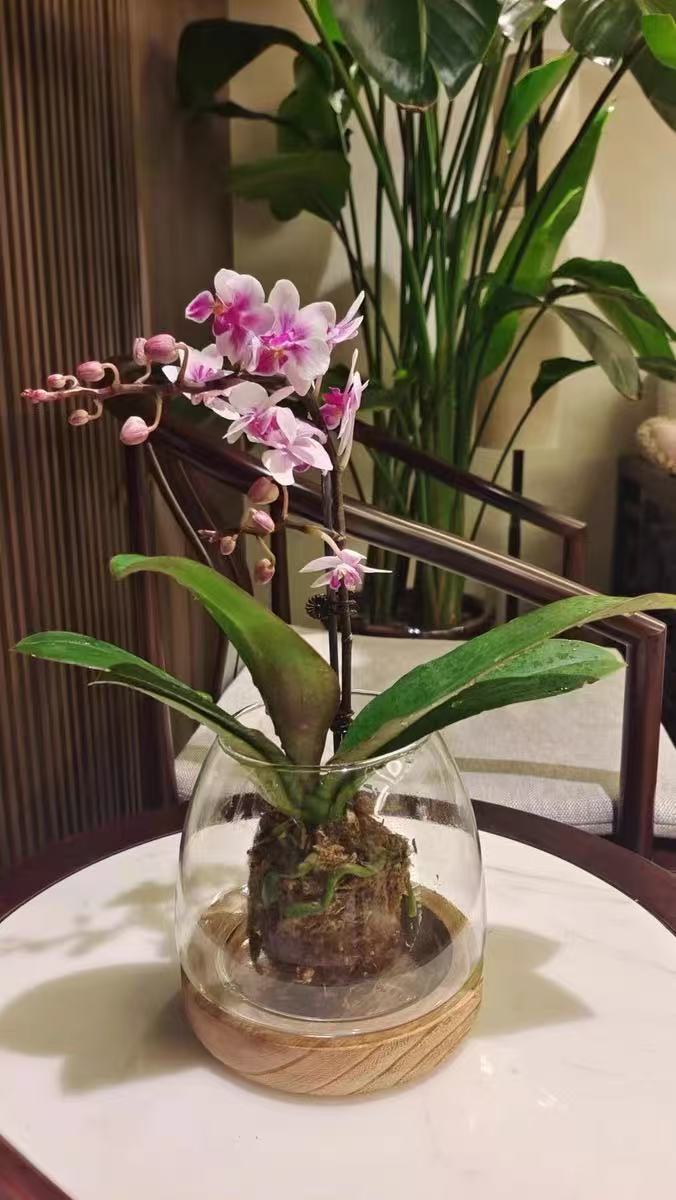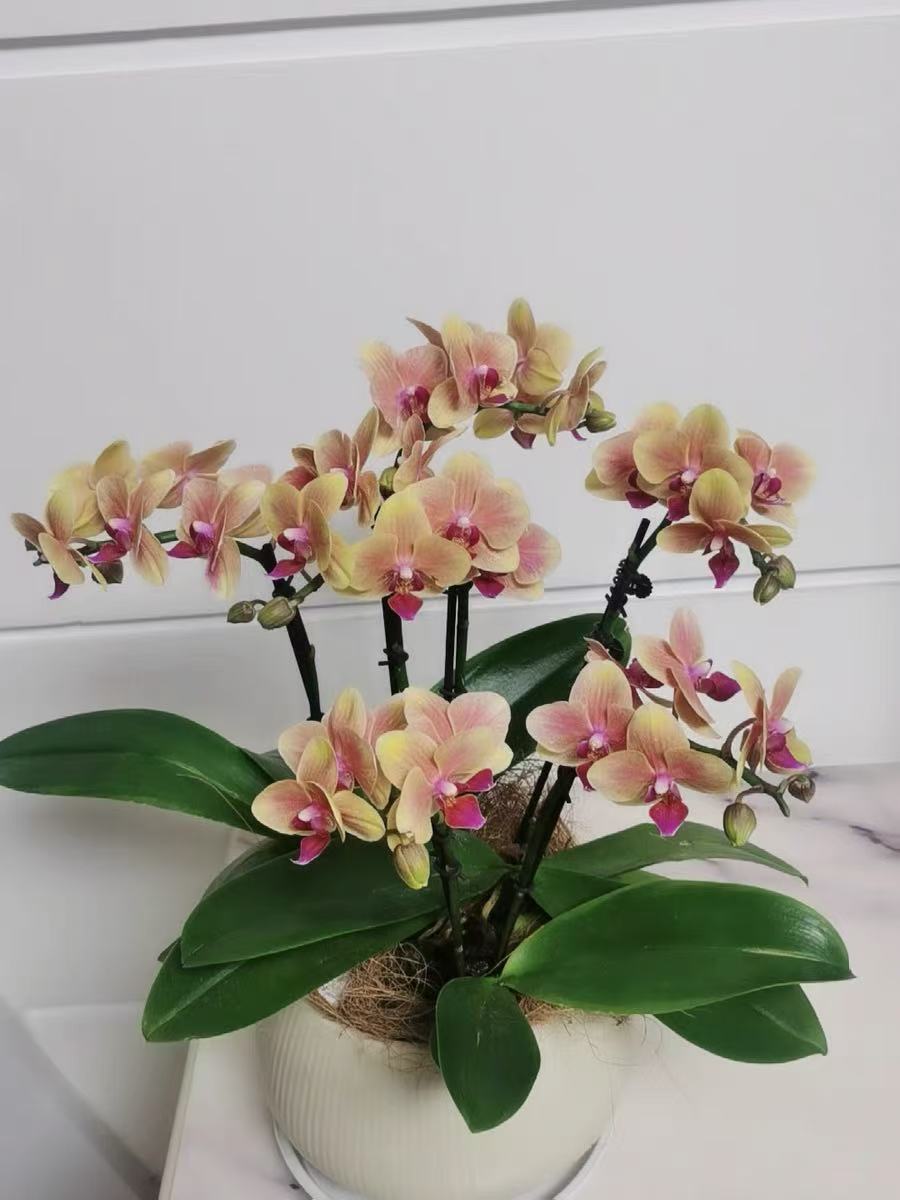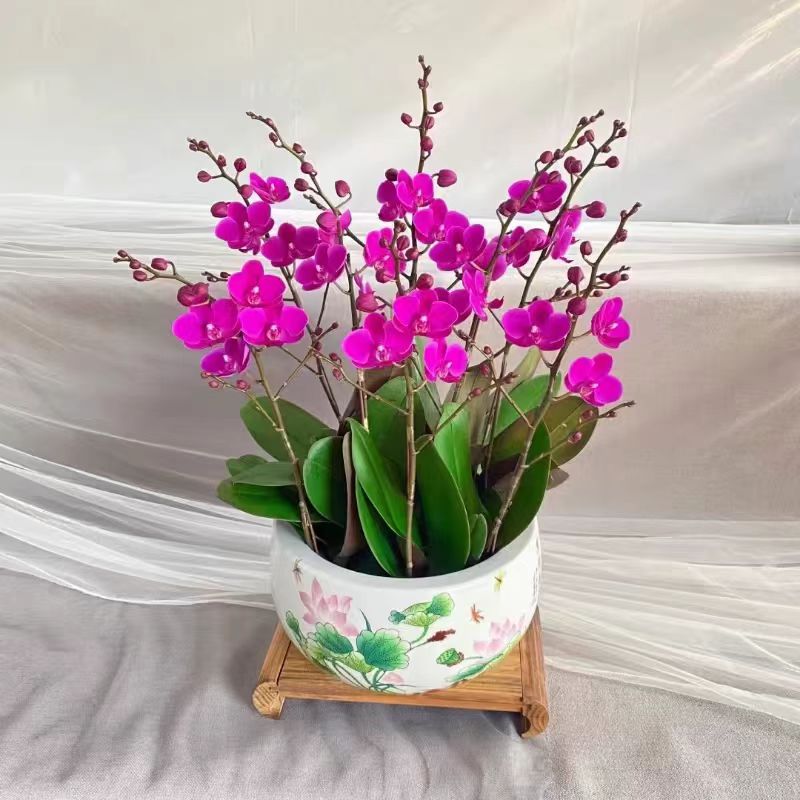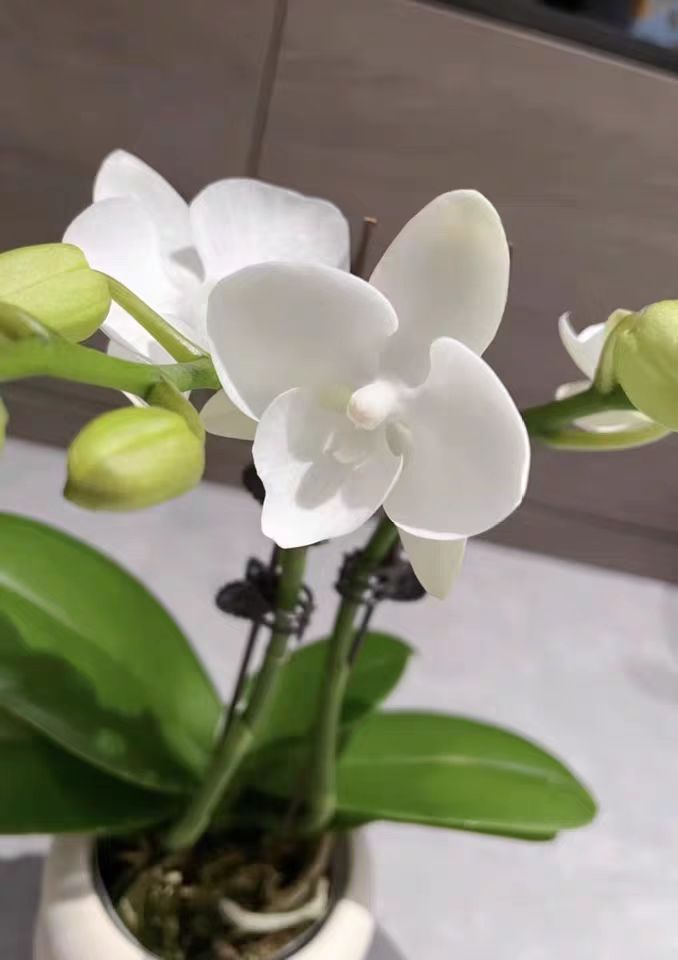Phalaenopsis is an elegant and beautiful flower with thick, leathery, and shiny leaves. However, when the leaves of hydroponic Phalaenopsis become soft and wrinkled, how should we deal with it? In addition, can hydroponic Phalaenopsis be converted into a potted plant?
What to Do When the Leaves of Hydroponic Phalaenopsis Become Soft and Wrinkled?
Replenish Water in a Timely Manner: The most likely reason for the soft leaves of hydroponic Phalaenopsis is water shortage. Although the roots of Phalaenopsis are thick and can store a relatively large amount of water, in a hydroponic environment, water still needs to be replenished regularly. It is recommended to observe the water level in the transparent container to ensure that the water level slightly touches the root tips. After the roots grow out slowly, gradually increase the water level. However, please note that the water level should not be too high, otherwise the roots will not be able to come into contact with air for a long time, resulting in root suffocation and rot. Once the leaves start to become soft, water should be replenished immediately, and the water level should be increased appropriately. But it should be noted that this should be done gradually to avoid over - watering at one time.
Observe the Health of the Roots: The state of the roots directly affects the growth of Phalaenopsis. If the roots turn black and rot, it will cause the leaves to become soft and wrinkled. At this time, the Phalaenopsis should be taken out of the container in time to check the roots. After finding the rotten roots, cut off the rotten parts with a disinfected scissors and soak them in a bactericidal solution for 5 minutes to prevent infection. After pruning, let the wound of the roots dry before putting them back into the water. To prevent root rot, it is recommended to clean the container and roots regularly and use appropriate fertilizers and nutrient solutions.
Adjust the Environmental Humidity: Hydroponic Phalaenopsis requires an appropriate environmental humidity. In a dry environment, the leaves are prone to losing water and becoming soft. You can maintain an appropriate humidity through a humidifier, or add one or two flower stalk support rods on the outside of the container and stick them to the container with transparent tape to create a relatively humid micro - environment for the Phalaenopsis. In addition, you can also spray water on the leaves regularly to increase the air humidity.
Provide Appropriate Lighting: Phalaenopsis likes scattered light. Prolonged exposure to the sun or insufficient light will cause the leaves to become soft. It is recommended to place the hydroponic Phalaenopsis in a place with scattered light for maintenance, avoiding direct sunlight. If it is maintained outdoors, it can be shaded with a layer of sun - shading net.
Can Hydroponic Phalaenopsis Be Potted? The answer is yes. Hydroponic Phalaenopsis can be completely converted into a potted plant. The following are the steps to convert hydroponic Phalaenopsis into a potted plant:
Select Suitable Potting Soil: When converting to a potted plant, it is necessary to select a substrate with good drainage and strong air permeability, such as bark, coconut fiber, etc. Avoid using overly sticky soil, which may cause root rot.
Prune the Roots: Take the hydroponic Phalaenopsis out of the container and prune off the overly long, rotten, or dry roots. After pruning, soak it in a bactericidal solution for a period of time to prevent infection.
Potted Plant Maintenance: Plant the pruned Phalaenopsis in the prepared potting soil, water it thoroughly, and place it in a well - ventilated place with scattered light for maintenance. Pay attention to controlling the amount of watering and the frequency of fertilization to avoid over - watering and over - fertilization, which may lead to root rot.
The soft and wrinkled leaves of hydroponic Phalaenopsis may be caused by water shortage, root rot, insufficient environmental humidity, or improper lighting. These problems can be effectively solved by timely replenishing water, observing the health of the roots, adjusting the environmental humidity, and providing appropriate lighting. In addition, hydroponic Phalaenopsis can be completely converted into a potted plant. Just select suitable potting soil, prune the roots, and maintain it correctly.
What to Do When the Leaves of Hydroponic Phalaenopsis Become Soft and Wrinkled?

Share with
Tagged in :




Leave a Reply